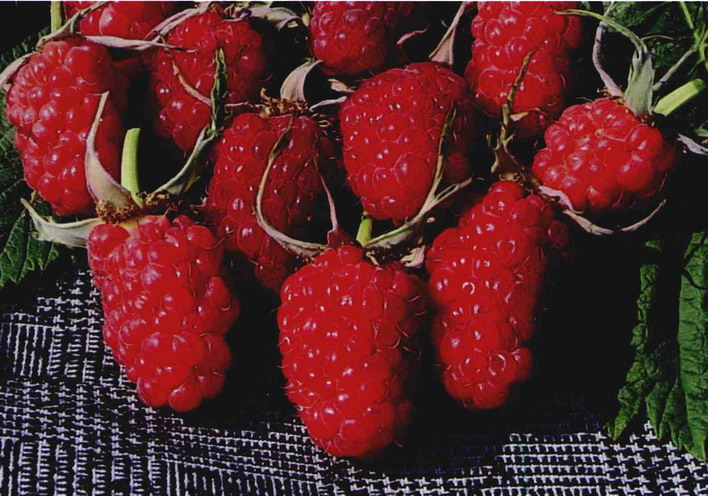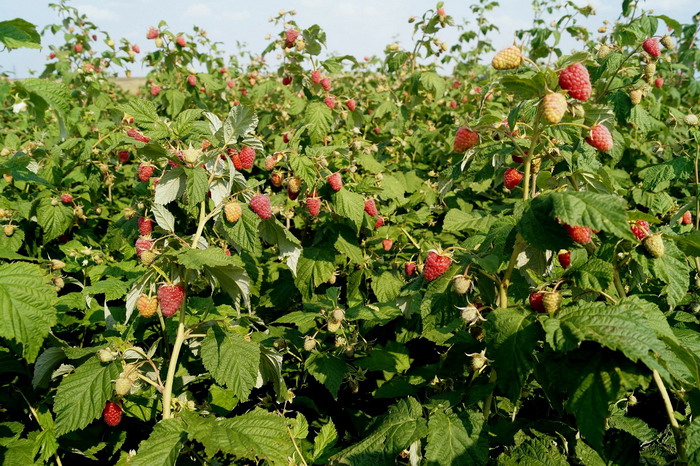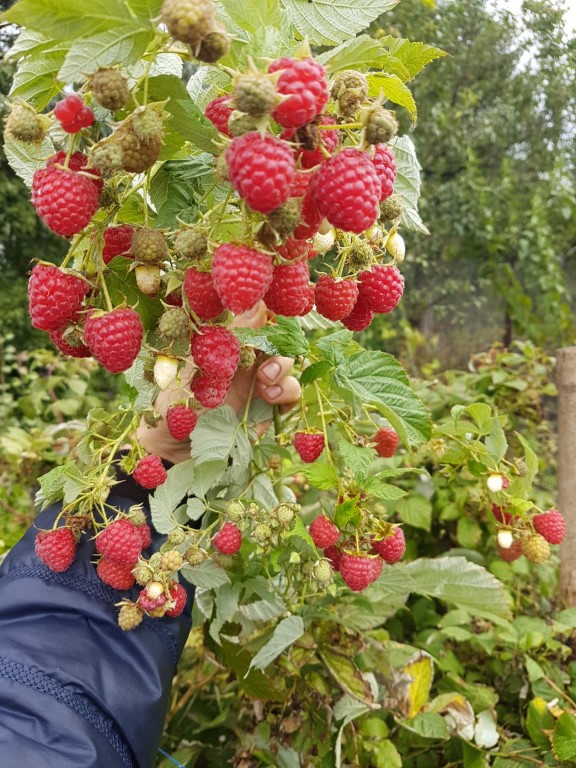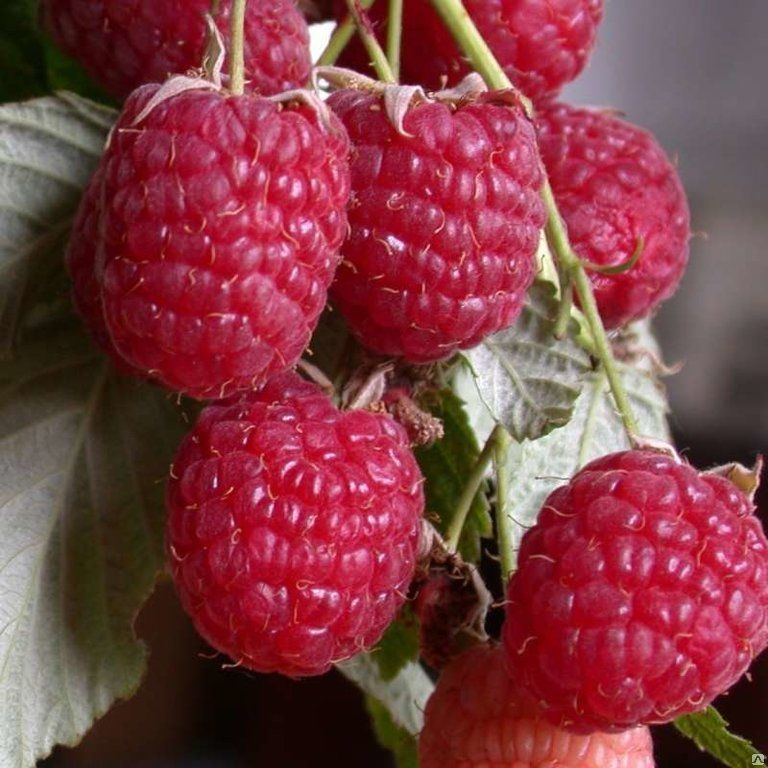Content:
Every year more and more gardeners prefer remontant varieties of raspberries. However, Volnitsa is an exception in this regard. It is a non-repaired berry with an average ripening period and excellent taste and marketability. This is what allows the variety to be very popular among summer residents.
Description of the variety
Volnitsa - the result of the labor of domestic breeders, who crossed the varieties Bryanskaya and Brigantina among themselves. The variety is excellent for growing in all climatic zones of our country and the Near Abroad. Productivity is high: one bush gives about 4 kg of high quality berries per season.
The characteristics of the berries of this variety indicate that they have a conical shape, at the stage of technical maturity they are colored bright red. The weight of one of them varies from 3 to 5 grams. The taste is sweet with a slight sourness, rated by tasters at 4 points.
The bush at Volnitsa is sprawling, reaching a height of 2 meters, which is why it requires a mandatory garter. Stems at a young age are almost devoid of thorns and have a barely noticeable waxy coating. At the age of two, the skin on the stems acquires a dark orange color and is covered with mild thorns. The leaves are large, have a rich dark green color and medium curl, not pubescent.
Raspberry variety Volnitsa can withstand a drop in temperature in winter to -30 ° C; in regions with an abundant amount of snow, it requires bending. It is characterized by increased resistance to major diseases and pests, but it can be affected by a kidney mite.

Volnitsa raspberries are suitable for all types of harvesting and processing
Berries have a universal purpose and can be used both for fresh consumption and for all types of preservation, freezing and drying. They have a delicate raspberry aroma, the bones are almost imperceptible. Raspberry Volnitsa fruits are firmly attached to the stalk. On the one hand, this is an advantage, because they are not prone to shedding, and on the other hand, it is a disadvantage, because harvesting is somewhat difficult.
On a note. The berries perfectly tolerate transportation over long distances and preserve their marketability and taste well, therefore the variety can be grown not only in summer cottages for their own needs, but also for commercial purposes.
Advantages and disadvantages
Reviews of experienced gardeners make it possible to highlight the main advantages and disadvantages of the Volnitsa variety. The positive qualities include:
- unique taste;
- pleasant classic aroma;
- suitability for transportation;
- universal use of the crop;
- unpretentious care;
- resistance to major diseases and pests;
- excellent winter hardiness.

The Wolnitsa variety has much more advantages than disadvantages.
Those who want to settle Volnitsa raspberries on their site study the description of the variety in great detail and pay special attention to the negative qualities. Among the minor shortcomings, there are average yield indicators, compared to other modern varieties, and a very strong fastening of berries with a stalk. However, these disadvantages are fully offset by the advantages of the variety.
Landing features
For planting raspberries Volnitsa, it is worth choosing a well-lit place located along the fence or in the corner of the site.Planting should be done exclusively in fertile loamy or sandy loam soil.
It is not recommended to plant Volnitsa on those beds where they used to grow:
- tomatoes;
- potatoes;
- Strawberry.
The bushes are planted in a trench way or in separate holes. When choosing the second method, dug holes of 40x50 cm in size, put the prepared mixture for planting in them. The plant roots are treated with a mullein solution, after which they are lowered into the prepared hole and added dropwise with soil. The distance between the bushes is at least 1 meter, and in the aisles - 2 times more. The root collar does not need to be buried, because due to excess moisture, root decay may begin. Before planting, all unnecessary shoots are removed, leaving only one of the strongest. A 20 cm long trim is made from it.

Saplings of raspberry Volnitsa after planting are watered and mulched
When choosing a trench method, planting varietal raspberries Volnitsa is carried out in pre-dug ditches, the width and depth of which is about half a meter. At the bottom of the ditch, a prepared mixture of mineral fertilizers, cow dung and fertile soil is laid. It is advisable to add a small amount of wood ash. Nitrogen-containing fertilizers are not applied, because they negatively affect the development of the root system. After planting, the seedlings irrigate and mulch the soil.
Care
In order for raspberry Volnitsa to please with delicious and healthy fruits in abundance, it will need some care. In the spring, cut off all the tops that have not survived the winter and are frozen over. Remove weak and non-viable shoots. A full bush contains 6 to 8 shoots. Excess shoots that appear during the summer are removed. By autumn, more shoots are left. This is a kind of safety net in case not all of them spend the winter.
Before bud break, the bushes are treated with Bordeaux mixture, and then with urea. Immediately after the onset of heat, nitrogen-mineral fertilizers are applied to the soil. If there was no heavy snowfall during the winter period, then in the spring the beds with raspberries should be watered. The next time the irrigation is done in June. Excessive moisture is highly undesirable, since it is fraught with root rot and the death of bushes. After watering and rains, the bushes need to loosen the soil and remove weeds.
Attention! Timely loosening and removal of weeds helps to quickly get rid of excess moisture and prevent root rot.
In regions where heavy snowfalls prevail in winter, raspberries of the Volnitsa variety require mandatory bending to the ground. The procedure is carried out during the period of leaf fall. If you do this earlier, and even tie the plants into dense bunches, then their bark can begin to flutter.
Otherwise, planting and caring for Volnitsa raspberries are no different from the standard ones.
Disease and pest resistance
Volnitsa is a relatively new variety that has demonstrated increased resistance to viral and mycoplasma diseases, didimella and anthracnose. Raspberry twigs of this variety are covered with a bloom, which prevents cracking of the outer integumentary tissues and even in the dampest years the appearance and spread of fungal diseases. Thanks to this, there is no need to carry out chemical treatments, and the berries are environmentally friendly.
Volnitsa is malina with an average ripening period, therefore it is not as susceptible to damage by the larvae of the raspberry beetle as early varieties. However, if a lot of wormy fruits are formed, then treatment with special preparations that do not pose a threat to the harvest should be carried out. Similarly, they struggle with the raspberry-strawberry weevil.

Raspberry variety Volnitsa exhibits increased resistance to major diseases and pests
Raspberries of the Volnitsa variety are not prone to defeat by the shoot gall midge. The reason is all in the same wax bloom that covers the stems. Gall midge infects plants through cracks and developing fungal diseases. And if there are none, then this pest has no place in the raspberry tree.
Gardeners' reviews indicate that Wolnitsa can be grown not only by recognized masters of their craft, but also by novice gardeners. The variety is unpretentious in care, winter-hardy and gives abundant harvests. This raspberry forgives minor mistakes for beginners and makes them happy with tasty and healthy fruits. Due to the fact that the berries tolerate transportation well, you can grow Freeman both for your needs and for sale.












